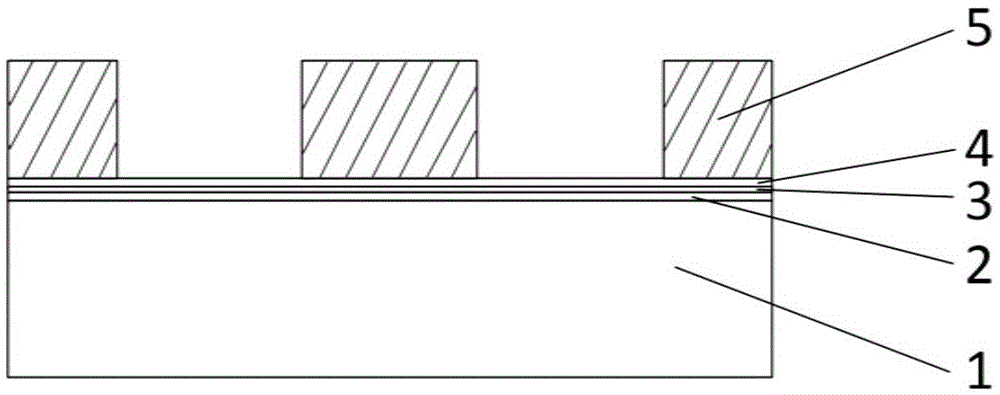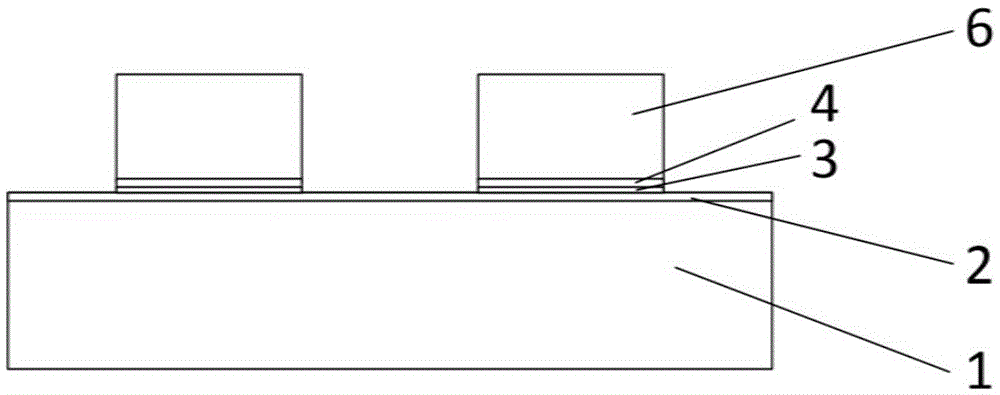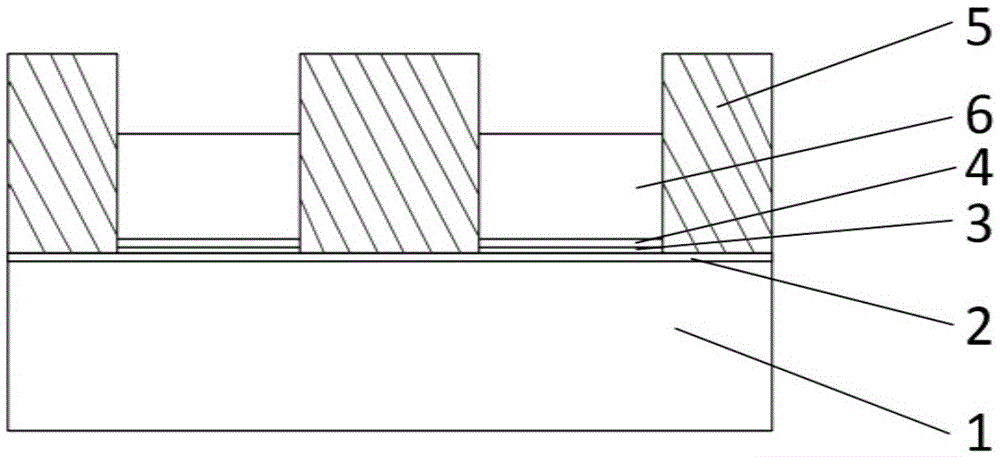Copper nanorod based copper-tin-copper bonding process and structure
A copper nanorod, copper bonding technology, applied in the fields of nanotechnology, nanotechnology, nanotechnology for material and surface science, can solve problems such as reducing interconnection temperature, reduce thermal deformation and thermal stress, improve Bond quality, effect of tight bond interface
- Summary
- Abstract
- Description
- Claims
- Application Information
AI Technical Summary
Problems solved by technology
Method used
Image
Examples
Embodiment 1
[0061] The copper-tin-copper bonding process based on copper nanorods includes the following steps:
[0062] (1) Deposit a layer of insulating layer SiO on the clean substrate surface by thermal oxidation 2 , with a thickness of 50nm; and then using magnetron sputtering to sequentially deposit an adhesion layer Ti and a seed layer Cu with a thickness of 20nm and 50nm, respectively.
[0063] (2) Spin-coat PR1-4000A positive photoresist with a thickness of 5 μm on the surface of the seed layer, use a pattern mask containing an area-array circular hole, the circular hole area is transparent, the diameter of the circular hole is 5 μm, and the center distance of the circular hole 10 μm, use MA6 contact photolithography machine for photolithography, and use RD6 developer for development, rinse with deionized water and blow dry with nitrogen gun.
[0064] (3) Put the pattern obtained by photolithography into the copper plating solution for electroplating. The copper plating solution...
Embodiment 2
[0070] The copper-tin-copper bonding process based on copper nanorods includes the following steps:
[0071] (1) Deposit a layer of insulating layer SiO on the clean substrate surface by thermal oxidation 2 , with a thickness of 50nm; then, the adhesion layer TiW and the seed layer Cu are sequentially deposited by magnetron sputtering, with thicknesses of 50nm and 100nm, respectively.
[0072] (2) Spin-coat PR1-12000A positive photoresist with a thickness of 20 μm on the surface of the seed layer, use a pattern mask containing an area array hole, the hole area is transparent, the diameter of the hole is 50 μm, and the center distance of the hole 100 μm, use MA6 contact photolithography machine for photolithography, and use RD6 developer for development, rinse with deionized water and blow dry with nitrogen gun.
[0073] (3) Put the pattern obtained by photolithography into the copper plating solution for electroplating. The copper plating solution selects SYSB2210 bump copper...
Embodiment 3
[0079] The copper-tin-copper bonding process based on copper nanorods includes the following steps:
[0080] (1) Deposit a layer of insulating layer Si on the clean substrate surface by chemical vapor deposition (CVD) 3 N 4 , with a thickness of 100 nm; then, an adhesion layer Ti and a seed layer Cu are sequentially deposited by magnetron sputtering, with thicknesses of 50 nm and 200 nm, respectively.
[0081](2) Spin-coat NR26-25000P negative photoresist with a thickness of 50 μm on the surface of the seed layer, using a pattern mask containing a round hole around the hole, the hole area is opaque, the diameter of the hole is 100 μm, and the center of the hole is The distance is 400 μm, and the MA6 contact photolithography machine is used for photolithography, and the RD6 developer is used for development, and then rinsed with deionized water and blown dry with a nitrogen gun.
[0082] (3) Put the pattern obtained by photolithography into the copper plating solution for ele...
PUM
| Property | Measurement | Unit |
|---|---|---|
| diameter | aaaaa | aaaaa |
| diameter | aaaaa | aaaaa |
| diameter | aaaaa | aaaaa |
Abstract
Description
Claims
Application Information
 Login to View More
Login to View More - R&D
- Intellectual Property
- Life Sciences
- Materials
- Tech Scout
- Unparalleled Data Quality
- Higher Quality Content
- 60% Fewer Hallucinations
Browse by: Latest US Patents, China's latest patents, Technical Efficacy Thesaurus, Application Domain, Technology Topic, Popular Technical Reports.
© 2025 PatSnap. All rights reserved.Legal|Privacy policy|Modern Slavery Act Transparency Statement|Sitemap|About US| Contact US: help@patsnap.com



